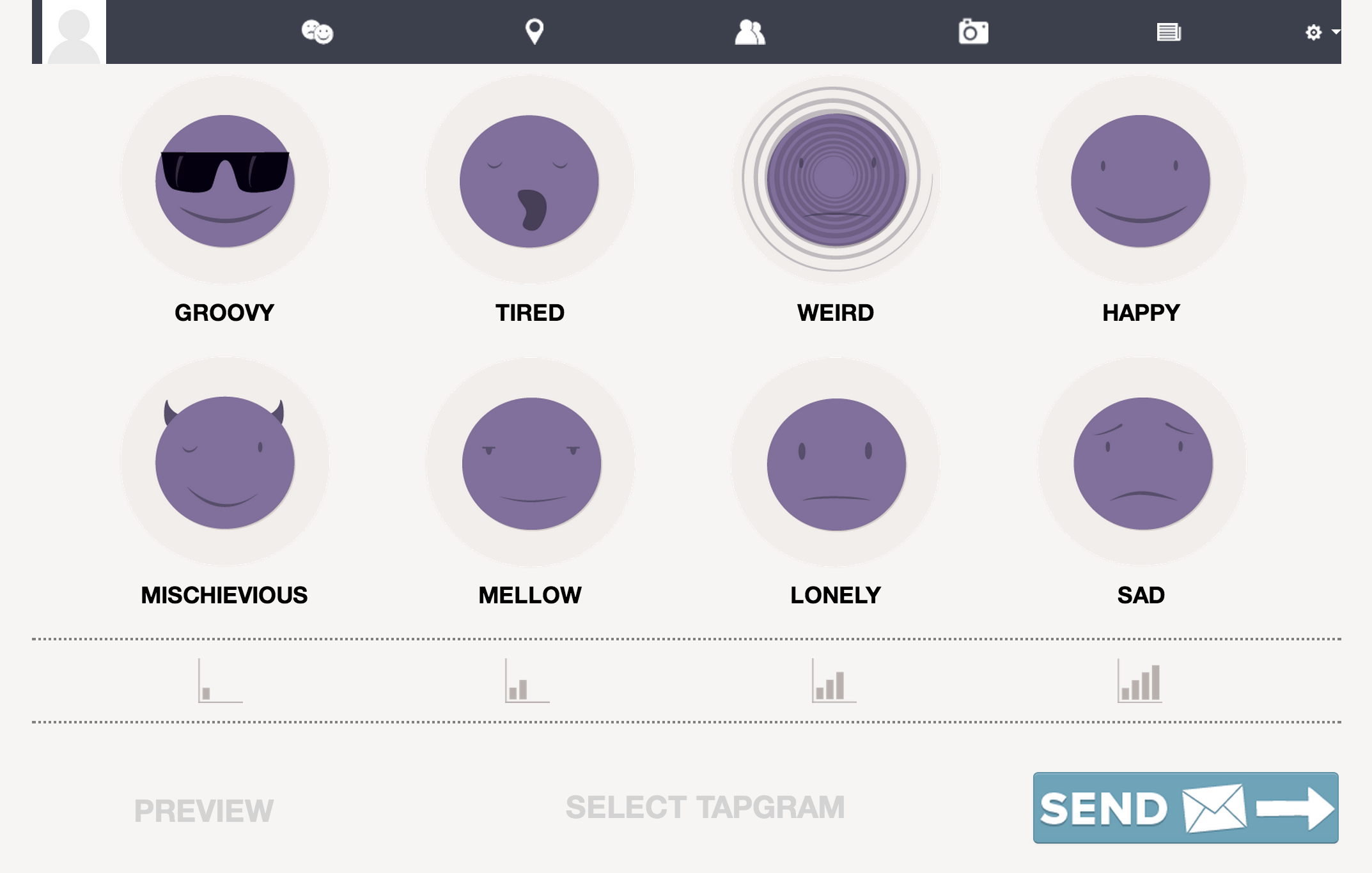There were plenty of promising startups showing off at Disrupt NY 2013’s Startup Alley (one of them even became a Battlefield finalist as an audience choice), but none managed to yank on the ol’ heartstrings quite as much Tapgram. Long story short, Tapgram is a social service that aims to dramatically simplify the process of communicating for people who have trouble doing it otherwise.
Rather than force people to peck out responses, Tapgram lets them respond by tapping large, simple icons that signify moods — the yawning face means you’re feeling a bit sleepy, and and you can probably guess what the big purple frowny face signifies. Nestled below that grid of faces are four severity modifiers so you can temper or emphasize the message you’re trying to send. After all, there’s a considerable difference between feeling a little groovy and extremely groovy (and before you ask, those are indeed real options).
Switching over to the location menu lets those users tap even more big bright icons to share places they’ve gone to, are thinking about going to, or want to go to. From there, those messages get pushed into a stream of activity for friends and loved ones to keep track of, and a quick change in the settings automatically pushes those messages to connected Facebook newsfeed.
But why take such a simplistic approach to communication? Well, for some people, it’s much easier than the alternative. That’s the case for Tapgram creator Ruble’s mother. After having a stroke she has been has dealing with a condition called aphasia that prevents her from processing language as the rest of do, which makes more traditional modes of communication woefully complex. His name could sound familiar if you’ve been keeping tabs on thoughtful accessibility hacks — Ruble was also responsible for a Kinect project that used Microsoft’s gesture-tracking camera to help his mother send emails, a hack that ultimately led to Tapgram’s creation.
It’s simple, sure, but Ruble says it’s been very effective not only for people dealing with aphasia. So far, the service has been available as a public beta for the past four months or so and counts people with autism and those coping with traumatic brain injuries among its hundreds of users. As you’d expect from a beta service it’s all still a little rough around the edges, but it works mostly as intended and Ruble pointed to the possibility of native apps down the road to help make the experience of communicating via Tapgram a little smoother. If nothing else, it’s already helping some people (and the folks that care about them) communicate easier, and that’s worthy of some praise in my book.

